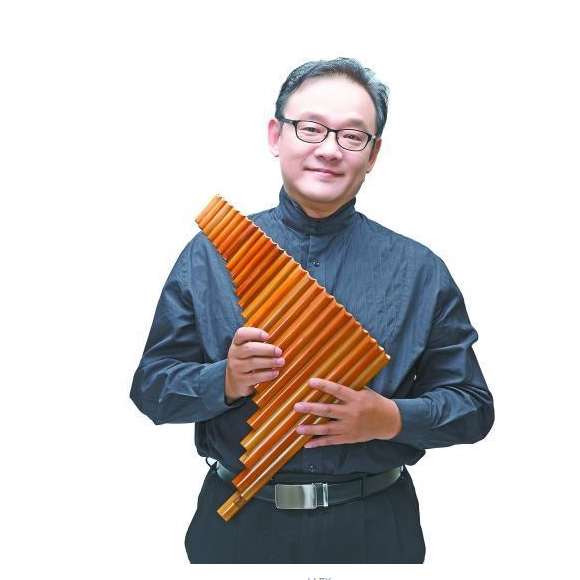Du Cong
Organized by 陆晨 on 2022-03-01

Du Cong, famous for pan flute. In 1978, Du Cong entered the Folk Music Department of the Shanghai Conservatory of Music; after graduation, he went to the Shanghai Chinese Orchestra, where he was the last of the 8 flutes in the orchestra; Three China Golden Disc Awards. There is "the prince of pan flute", known as the first person of pan flute in Asia.
In 1978, he was admitted to the High School Affiliated to Shanghai Conservatory of Music, under the tutelage of Mr. Zhao Songting.
In 1981, he was promoted to the Department of Folk Music under the tutelage of Mr. Lu Chunling.
In 1985, he joined the Shanghai Chinese Orchestra, and in the same year won the first prize for wind music at the Shanghai Art Festival.
In 1986, he collaborated with Taiwan's "Music China" Publishing House to record the flute CD "The Sound of the Dirt".
In 1991, he was transferred to the Shanghai Song and Dance Troupe.
Since 1991, he has successively recorded dozens of albums of Pai Xiao, including "Meditation", "Angel of Red Dust", "Autumn Dream 1", "Mountains and Flowing Water", and "Album of Pai Xiao Prince and Du Cong". He has led and soloed in dozens of film and television dramas.
Similar artist
Du Chong is a very talented performer in today's music scene. He is devoted to the performing arts of various ethnic wind instruments.
read >>
Involving musical instruments
Pai Xiao (pinyin: pái xiāo), also known as Pan Di, Fengwei Xiao, is an ancient musical instrument found in ancient China, South America, Europe, and Africa. Connect several wooden or bamboo pipes of different lengths, blow directly through the mouth, each pipe emits a sound, and the melody is displayed by continuously blowing different pipes.
Involved portfolio
拙 - 50 views
象牙山首富 - 69 views
Susan - 42 views
爱在西元 - 50 views
夜夜 - 76 views
Involved news
Organized by 未知领地 on 2022-04-21
Panpipes have different names in different periods and regions. In ancient China, the pan flute had many famous names. Yaxiao, Songxiao, Shunxiao, Qinxiao, Fengxiao, Fengyi, Yunxiao. There are also some unfamiliar aliases for pan flutes: staggered, bizhu, short flute, bottom flute, xiao, lai, etc. Pan flutes have their own unique names in all countries of the world.
read >>
Organized by 晚荣 on 2022-02-09
Pai Xiao played an important role in both the advocacy of the Han Dynasty and the music of the Sui and Tang Dynasties. Sui is the predecessor of the later pan flute. In the Zhou Dynasty, Xiao and Sui were mentioned by poets and included in the Book of Songs. In the classification of ancient musical instruments, the pan flute is listed as a bamboo musical instrument. In the era of Yu and Shun, there was a music and dance called "Xiao Shao", which was mainly played with the pan flute. In ancient times, the pan flute, like chimes and chimes, was a very popular musical instrument. From the Spring and Autumn Period to the Qin and Han Dynasties, the pan flute was widely circulated among the people, and it occupied a very important position in the advocacy of the Han Dynasty.
read >>
Organized by 赵锦辛 on 2022-02-09
Paixiao is a "blow hole and chirping musical instrument", made of bamboo, about 80 cm long, and the purple bamboo flute has about 6-8 bamboo knots. Its shape is as follows: the upper end of the seal (or opening) has a blow hole on the edge of the bamboo joint, the tube body generally has 6 accuses, 5 holes in the front, 1 hole in the back, and two pairs of sound holes below, the bottom end is an open tube, the sound interval It is two octaves, and can also be trained to play the overblown 4th interval, but it is not often used.
read >>
Organized by 赵锦辛 on 2022-02-09
There are many materials for making panpipes, such as bitter bamboo, thin bamboo, ebony, sandalwood, mahogany, rosewood, cherry wood, serpentine wood, rosewood, ceramics, glass, carbon fiber, glass fiber, acrylic, ABS plastic, copper Pipes, steel pipes, etc. Commonly used are bitter bamboo, various wood, carbon fiber, plastic.
read >>
Organized by 卷鹅 on 2022-02-09
The sound of Paxiao is soft and elegant, and the low-pitched sound is deep and sad, with strong penetrating and vibrating power.
read >>
Popular artists
- 01 Zhang Xiuyan
- 02 Chen Tao
- 03 Li Muliang
- 04 Zhang Gaoxiang
- 05 Wang Min
 渝公网安备 50010702504639号
渝公网安备 50010702504639号